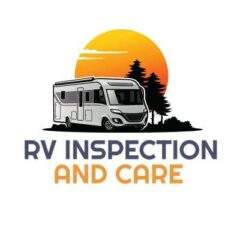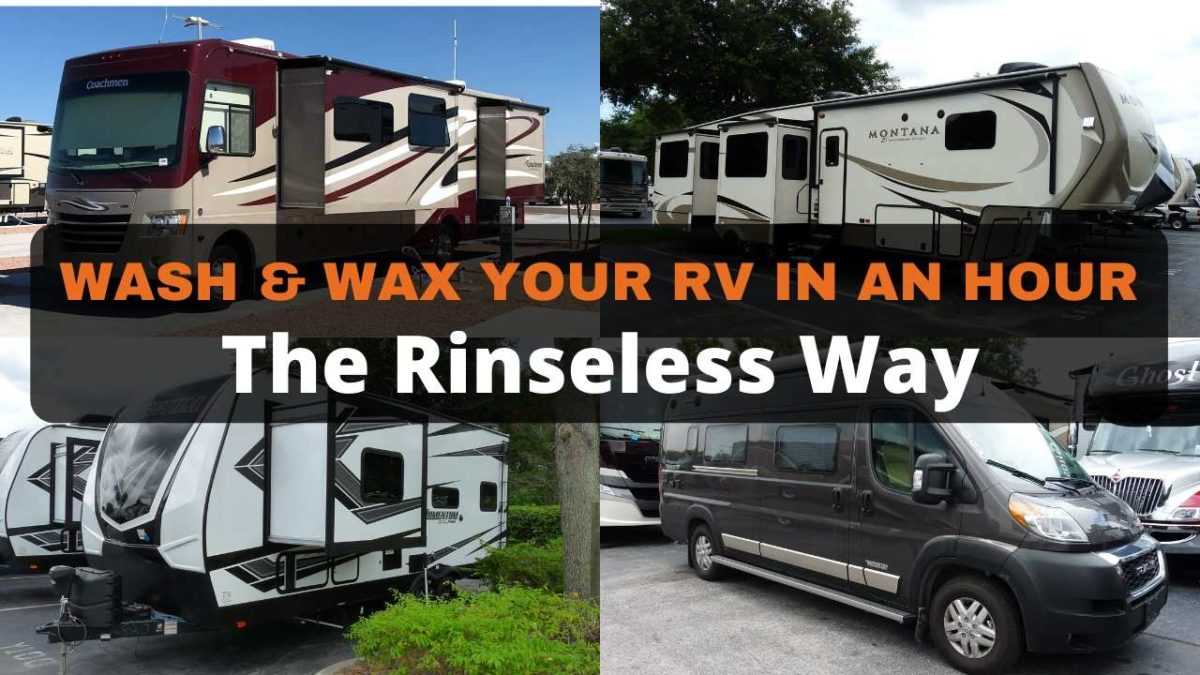RV awning care is important because awnings make RV living so much more pleasant and enjoyable.
In fact, they can serve many useful functions. They can extend our living space, help cool our RV in summer,and protect things like bicycles and grills.
Besides all that, they also provide a comfortable shelter from direct sun and light rain.
So with all that awnings accomplish, it makes sense to practice some simple RV awning care procedures to extend the life and usefulness of our awning.
This article will discuss 5 ways to maintain and improve the use of an RV awning.
Disclosure: Please note this post may contain affiliate links. This means – at no additional cost to you – I earn a commission if you make a purchase using our affiliate links. I only link to products and companies I use and feel comfortable recommending. The income goes toward supporting the free content on this website
Table of Contents
- 1 – Cleaning Is Part Of RV Awning Care
- 2 – Never Leave An RV Awning Out In Strong Winds
- 3 – RV Awning Care Can Include Using Tie-Downs
- 4 – Use RV Awning Deflappers
- 5 – Extend Awning Protection With A Sun Shade
- Conclusion
1 – Cleaning Is Part Of RV Awning Care
A lot of RVers never even think about cleaning the awning material on their RV. But regular cleaning extends the life of an awning considerably.
Most RV awning materials are made of either acrylic or vinyl. And you can use a dedicated RV awning cleaner on either of them.
Vinyl awnings are more robust and can handle a wider variety of cleaning solutions well. But acrylic awnings call for using the right kind of cleaner to avoid stripping the water-resistant coating away.
The cleaning process is actually pretty simple too. While the awning is out, spray the cleaning solution on both sides of the awning material.
When it is fully covered with solution, roll the awning back up against the RV and let it sit for 15 minutes or so. This allows the cleaning solution to thoroughly get absorbed into all parts of the awning material.
Then open the awning again and thoroughly rinse with water. After that allow it to dry completely before rolling it back up again.
If this is done twice a year, it usually keeps the awning material looking good and generally clean.
Click here for RV awning cleaner
2 – Never Leave An RV Awning Out In Strong Winds
In calm weather an awning functions well and poses no problem. But when high winds start to kick up, it’s time to get that awning back into its storage position.
This is because an awning can become like a huge sail in high winds and it’s easy to experience damage at that point.
Sometimes it just rips the awning material itself, but other times it can even damage the awning frame too.
At any rate, any of this kind of damage is expensive to repair. So it’s best to just avoid the issue completely and take in the awning when winds are strong.
How strong should the wind get before you take it in? That’s difficult to say, but just know that even wind speeds of 15 miles per hour can do damage. And above that speed, the chances of wind damage gets far greater.
So if you plan on leaving your RV for a while, it’s a good practice to think about pulling in the awning while you are gone.
This is because weather can change suddenly and abruptly. So bear that in mind as you decide whether to leave the awning out or not while you are away.
One more tip – always leave one side of the awning lower than the other side when it rains.
This makes sure that the rain water will have a clear path to drop off and not just pool on the awning material. Pooling water can rip an awning easily.
3 – RV Awning Care Can Include Using Tie-Downs
Some RV awnings have better support frames than others. So therefore, some awnings can stand up to more wind speed than others.
In either case, it’s not a bad idea to provide a little extra insurance against wind damage by using tie-downs. They can help provide more strength and stability while the awning is deployed.
They are also very easy to use and don’t take much time to setup and remove.
I often see RV awning stabilizers installed with the tension strap in front of the awning. But I have found that they can work almost just as well if the tie-down stake is placed back toward the RV too.


And in most cases, it will be best to use a ground stake that screws into the ground to anchor the tension strap. This kind of stake is much harder to pull up and so is more reliable.
Click here for an awning tie-down kit
Click here for corkscrew awning stakes
4 – Use RV Awning Deflappers
If wind conditions start to get active, you may notice that the awning material starts to flap in the wind. This is especially true of acrylic awnings.
The sound that a flapping awning makes is irritating for sure. But there is also danger of damage being done by this kind of flapping as well.
Over time, the flapping motion can slowly weaken the edges of the awning and cause them to fray. And it also can eventually have a negative effect on other parts of the awning.
So, it’s part of good RV awning care to install awning deflappers that stretches the awning material and holds it in place.
They also go on easily and quickly, so it’s a simple process. And they can be removed in just a few minutes too.
Click here for RV awning deflappers
5 – Extend Awning Protection With A Sun Shade
Part of RV awning care is getting the most use of your awning. And since one of the main advantages of an RV awning is the shade it provides, just extend that shade further.
You can do that with a sun shade that will extend the shady area of the awning farther toward the ground. But it also continues to allow easy visibility through the shade material.
In addition to the added shade, it can also provide a greater measure of privacy if you are too close to your campground neighbor.
These kind of sun shades are also easy to attach to your RV awning. They have a strip that goes into an open rail that is found in most awning bars.
The strip holds the sun shade to the awning firmly. From there most sun shades have grommets that can be used to tie the bottom of the shade to the ground with stakes.
Many RVers use bungee cords to hold down the bottom of their awning shade. And they work well for this purpose.

Once the sun shade is attached to your awning, you are shielded from much of the sun on that side of the RV. It can make the difference between enjoying your awning in comfort or leaving to go back inside.
There are even sun shades that can fit on the ends of the awning too. And of course, these can increase both shade and privacy when in use.
Click here for awning sun shades
Click here for awning end cap sun shades
Conclusion
Just adding a few ideas and procedures to your RV awning care plan can be very beneficial. It can save you lots of money on awning repairs and extend the usefulness of your awning too.
The 5 tips presented in this article are simple and easy to do. And putting them into practice will improve your RV living experience.
Have safe and happy travels my friends!




